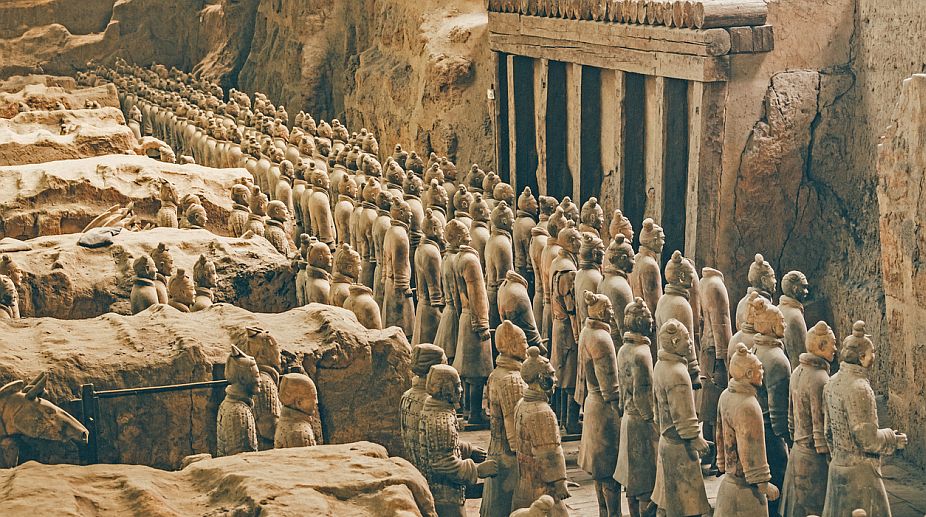During this week, we talked about some of the artifacts that were in the Qin Emperors’ tomb.
While I was previously aware of the Terracotta army, and how impressive of an artistic feat it was to finish them– the sheer expansiveness of his tomb, and how intricate each section of his tomb was, astounded me.
One point which was made in class was that the crossbows were made in such a way that each part was easily interchangeable. This went to show how systematized production had become at this point. Looking back at the timeline, it just changes my perspective on industrialization– as that is something that is only attributed to the modern age. Another point was also the arrowheads, and how their mixtures (the metals they were made of) did not differ from one another. Further proving just how they had a grasp on precision in metallurgy. This course has helped me get a better understanding of how development can be viewed through the context of the historical period. While at first some of these archaeological finds seemed irrelevant, upon further consideration when fully grasping the historical context in which these artifacts were made– I am awestruck. I always have to return to the picture of the timeline in order to remind me of how much time has passed since then. This class has warped my perception of time like no other class has.
The Records of the Grand Historian were a great source of information, it also instigated more questions than answered them. There is the question of… who exactly the Grand Historian is? and how they were able to come upon this information if “no one” is supposed to know… While it serves as textual evidence for the Qin Emperor’s Tomb, and aspects of archaeological quirks in the writing are proven through further excavation, there are more questions, such as what is the “man-fish oil?” Words such as this bring up a prominent issue for historians. Was it simply a mistranslation, or perhaps just the language barrier at play, or lack of historical or cultural context?
Ledderose, Lothar. Ten Thousand Things : Module and Mass Production in Chinese Art. The A.W. Mellon Lectures in the Fine Arts, 1998. Princeton, NJ: Princeton University Press, 2000
Exploration pack A
